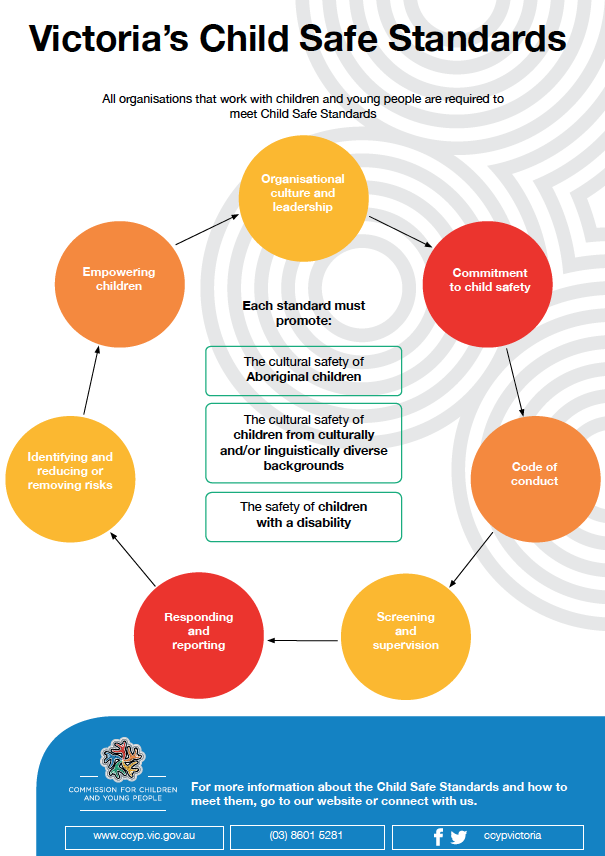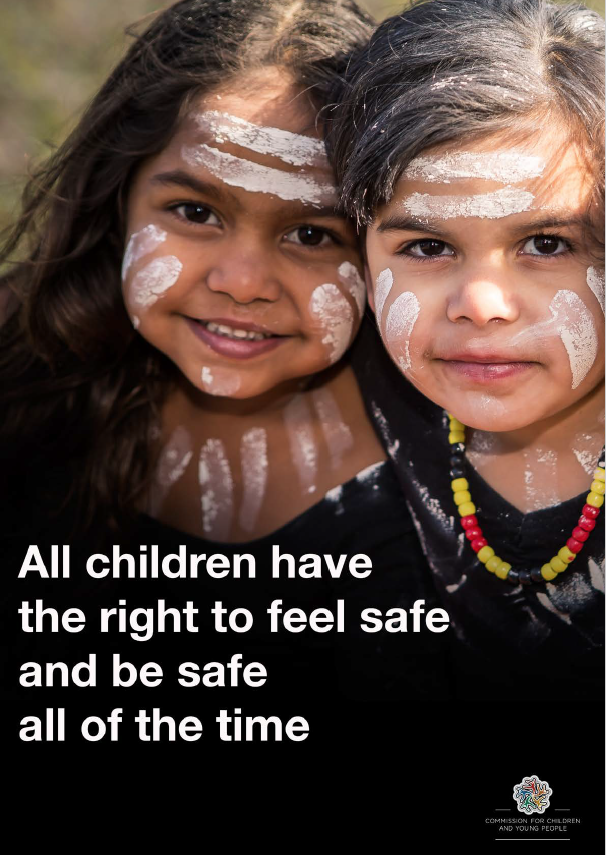1. Culturally Safe Environments: Establish a culturally safe environment in which the diverse and unique identities and experiences of Aboriginal children and young people are respected and valued.
2. Child Safety and Wellbeing Guidance: Ensure that child safety and wellbeing are embedded in school leadership, governance and culture.
3. Child and Student Empowerment: Children and young people are empowered about their rights, participate in decisions affecting them and are taken seriously.
4. Family Engagement: Families and communities are informed and involved in promoting child safety and wellbeing.
5. Diversity and Equity: Equity is upheld and diverse needs are respected in policy and practice.
6. Suitable Staff and Volunteers: People working with children and young people are suitable and supported to reflect child safety and wellbeing values in practice.
7. Complaints Processes: Ensure that processes for complaints and concerns are child focused.
8. Child Safety Knowledge, Skills and Awareness: Staff and volunteers are equipped with the knowledge, skills and awareness to keep children and young people safe through ongoing education and training.
9. Child Safety in Physical and Online Environments: Physical and online environments promote safety and wellbeing while minimising the opportunity for children and young people to be harmed.
10. Review of Child Safety Practices: Implementation of the Child Safe Standards is regularly reviewed and improved.
11. Implementation of Child Safety Practices: Policies and procedures that document how schools are safe for children, young people and students.

